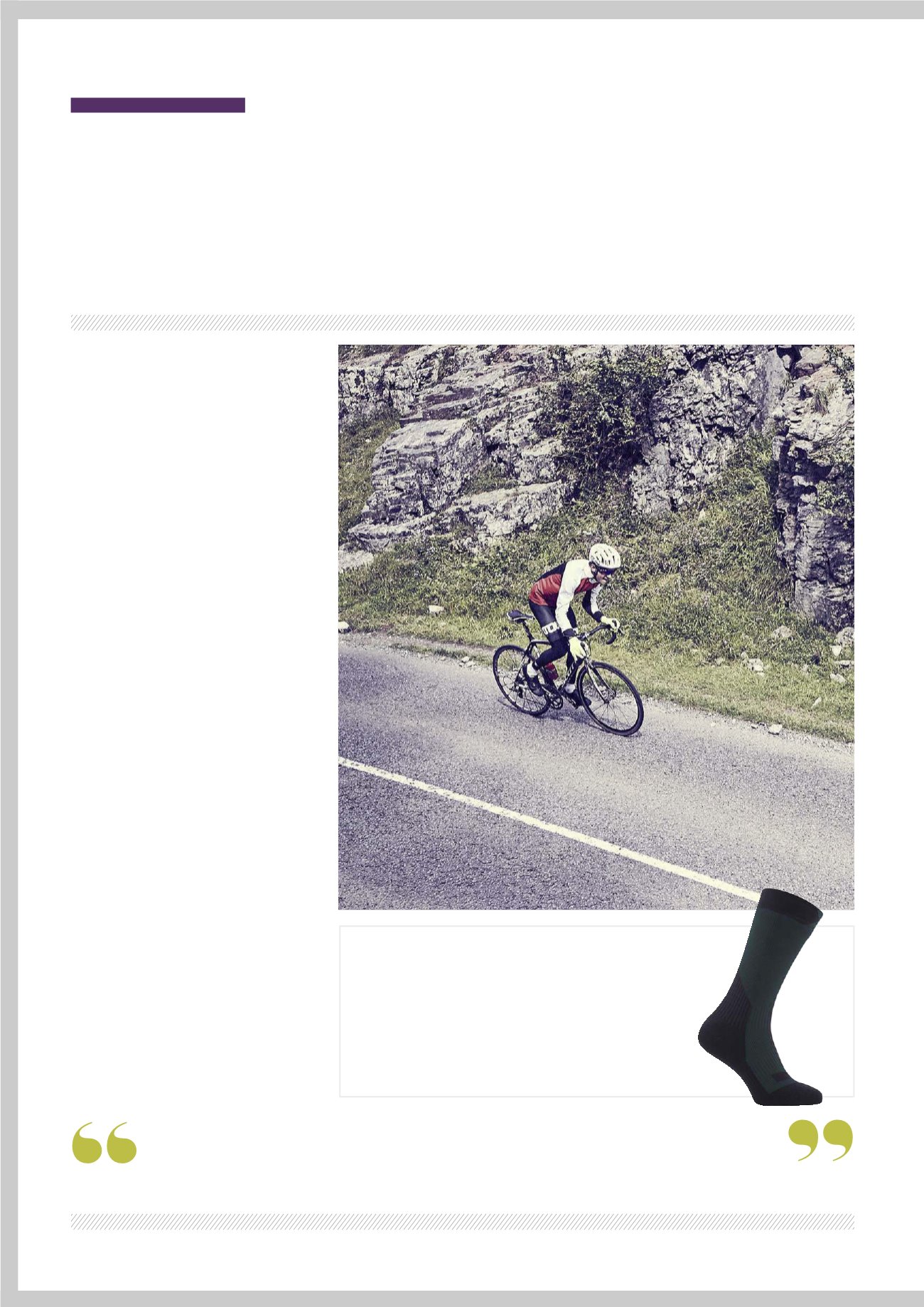

J
anuary is the month to start thinking
about the race season ahead: sitting
down with an events calendar, deciding
on your A, B and C priority events and working
backwards to plan your training and tapers.
Be honest about how much you’ve managed
to do during December. It’s not the end of the
world if you’ve taken a good break and gained
a few pounds. But if this is the case, you should
definitely re-test your Functional Threshold
Power (FTP) and/or Functional Threshold Heart
Rate (FTHR), and consider following the sessions
from issue 332 (December 2016) for a couple of
weeks to ease you back in.
If you’ve managed to keep things ticking over,
it’s time to throw a bit more intensity into the
mix. Many age-groupers look at how pros train,
putting in hours of steady miles over the winter
to establish an endurance base, and think they
should be doing the same. The reason this
works for the pros (though more are now also
incorporating more intensity into their winter
work) is the sheer volume of work they can do.
Thirty-five hours of base work each week will
elicit a training effect, whereas five to 10 hours
of going slow will achieve very little.
With that in mind, this month we’ve added
some threshold climbing efforts to the tempo
sections during your long weekend ride. Though
total ride duration is only three hours, these
efforts – which will be at an intensity above that
you’d maintain for a 40km bike leg – significantly
increase the demands of the session. For the
threshold efforts you should look for a climb that
takes 10mins to ascend but isn’t too steep.
Indoors, we’re working at Zone 5 VO
2
intensity
with a nasty sting in the tail. This intensity,
higher than you’d hold even for a sprint event,
is incredibly effective and important for all
triathletes. In simple terms, if you increase the
top-end capacity of your engine, lower-intensity
efforts will be far less demanding.
The aim here is to provide a main outdoor
ride session for the weekend, complemented by
a shorter indoor session that can be tackled
several times during the week. Heart rate and
power zones are given where appropriate and
are based on the British Cycling Zone Calculator
(http://tinyurl.com/jvxcpom).
Q
220
Kick-start your 2017 triathlon season with a new race plan and by incorporating
more intensity into your winter training.
Nik Cook
guides you uphill…
HEADTOTHEHILLS,
UPTHE INTENSITY
If you increase the top-end capacity of your
engine, lower-intensity efforts will be far less demanding
Try this…
SEALSKINZTREKKINGTHICKMIDLENGTHSOCKS
£37.0
0WWW.SEALSKINZ.COMIn truly foul conditions overshoes, no matter how good, just can’t
keep your feet dry. I found these Merino-lined, waterproof socks an
absolute godsend for winter riding. Designed for long treks, the
padded heel, toe and footbed also provide exemplary comfort. In
short, they’re a must for preventing ice-block feet and shoe rub.
TRAIN FOR 2017: PART 4 OF 6
Ramp up the intensity on
hills during tempo efforts
to boost your performance
96
I
WWW.220TRIATHLON.COMI
FEBRUARY 2017
PERFORMANCE
IMAGES
REMY WHITING

















